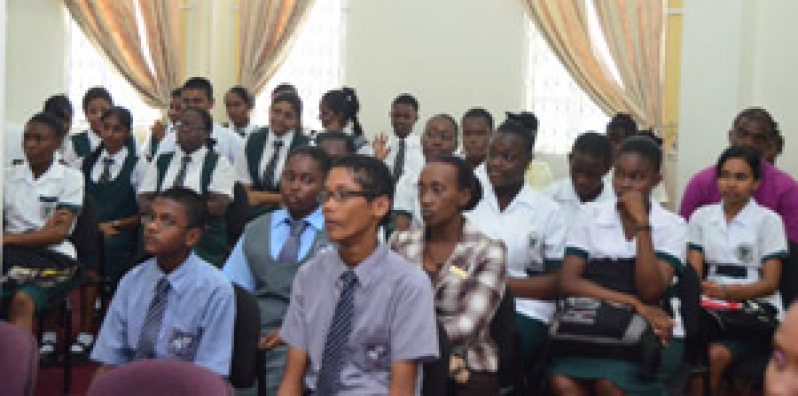AS part of the observance of World Book and Copyright Day, which was held yesterday under the theme “Reading, Publishing and the Protection of Intellectual Property through Copyright”, the National Library is hosting a three- day book exhibition.
 This exhibition, which runs until tomorrow, displays the works of various Guyanese authors and writers, including E.R. Braithwaite, Cheddi Jagan and David Dabydeen and also includes the display of the various winners of the Guyana Prize for Literature over the years.
This exhibition, which runs until tomorrow, displays the works of various Guyanese authors and writers, including E.R. Braithwaite, Cheddi Jagan and David Dabydeen and also includes the display of the various winners of the Guyana Prize for Literature over the years.
Speaking on the occasion, Chairman of the National Library Committee, Petamber Persaud said the main aim of World Book and Copyright Day is to focus on books, promote reading, and encourage publishing and the protection of intellectual property through copyright.
He noted that World Book and Copyright Day was established in 1995 by the United Nations Educational, Scientific and  Cultural Organization (UNESCO), and each year the parameters for this day of observance changes to meet the current trends and needs of society.
Cultural Organization (UNESCO), and each year the parameters for this day of observance changes to meet the current trends and needs of society.
He further stated that all of the elements of this year’s theme lead to economic growth, and it is his belief that copyright encourages more creativity, breeds innovation, and leads to better crafted works, hence more elucidation, learning and entertainment.
Mr. Persaud informed that Friday, April 26 is designated as World Intellectual Property Day, and the main aim is to raise awareness on how patents, trademarks and copyright affect daily life and help to promote creativity and innovation.
Meanwhile, author and former Chief Examiner of English Literature for the Caribbean Examination Council (CXC), Dr. Joyce Jonas addressed the audience, predominantly secondary school students, on the issue of copyright and piracy.
In her presentation, Dr. Jonas pointed out to the students that hard work and large sums of money are invested in order to produce materials which are often pirated, and persons often opt to buy pirated materials because they are cheaper than the original.
She explained that copyright basically means that only the person who wrote it has the right to copy it, and intellectual property rights mean that the person who has the rights to copy that book also has the right to the profits made.
She also stated that the persons who pirate these materials don’t have to pay all these expenses, and as such they can afford to sell them at a cheaper price, thus making a larger profit.
She also pointed out that as a result of these pirated materials which are sold at a cheaper cost, it is often found that less of the original materials is sold, despite the huge investments made.
CREATIVITY STIFLED
Piracy, she said, causes creativity to be stifled since persons are often discouraged from producing more materials upon the realisation that they are being pirated.
She posited that there are two ways in which this same problem can be presented, as those persons who pirate the materials also have their side to tell.
Dr. Jonas noted that as a result of the original materials being sold at a higher price, particularly text books, it is often difficult for large sections of the world’s population to get access to knowledge.
According to her, the books that are available to educate the people are often produced in territories such as London, New York and Toronto, and it is expensive to buy text books from these countries.
Photos stored in graphics> books
DSC_1253- Students paying keen attention to the presentations being made on the occasion of World Book and Copyright Day.
SAM_1936- A student of Bishops High views the books on display at the exhibition yesterday.



.jpg)









